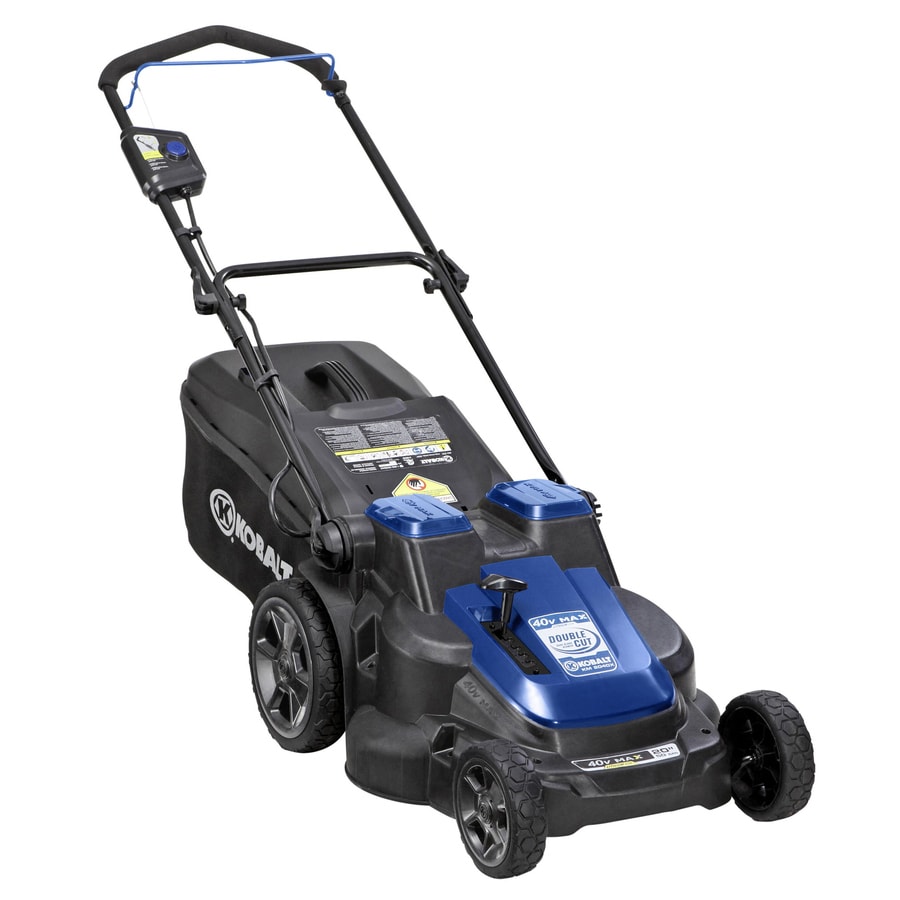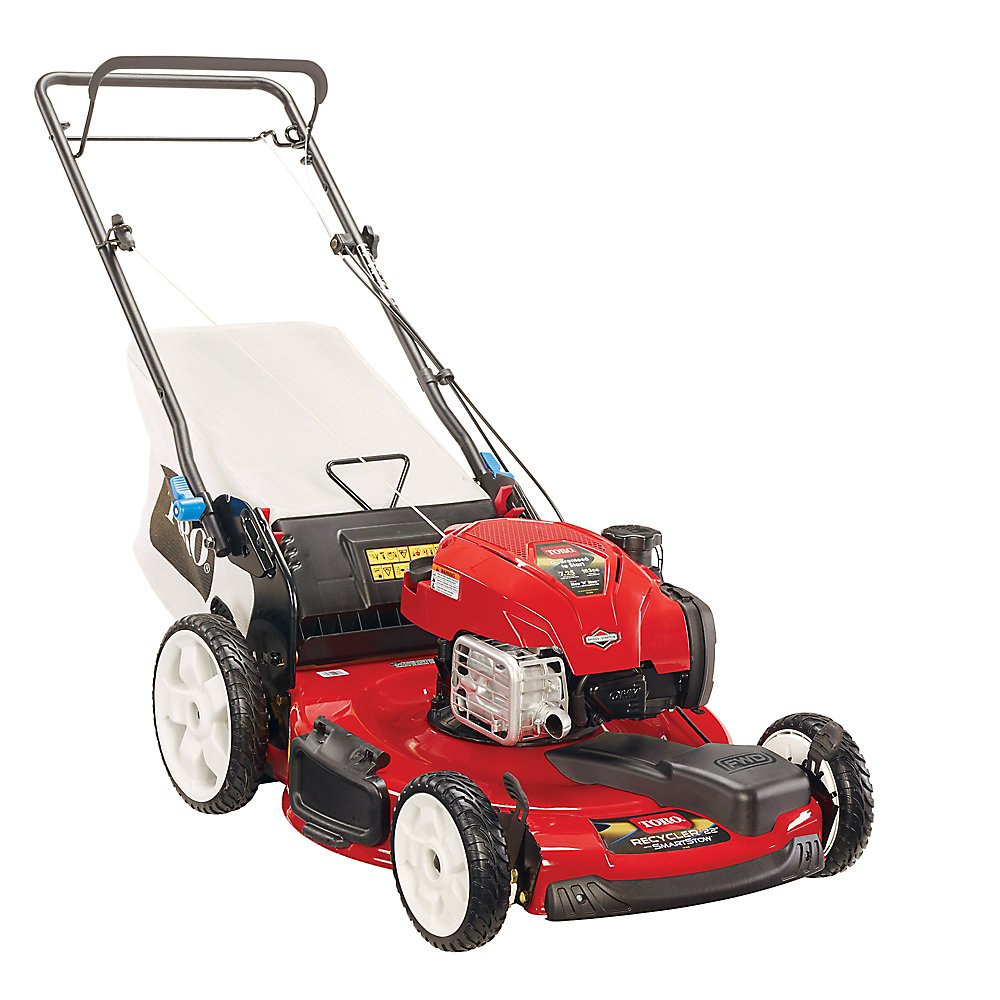A gas lawn mower is a valuable tool for landscaping and property maintenance. Its engine relies on gasoline or petrol as fuel and typically features a rotating blade that cuts grass efficiently and uniformly, resulting in a well-manicured lawn.
Gas lawn mowers have been widely used since the early 20th century, offering convenience and power to homeowners and professionals alike. They are renowned for their ability to tackle larger areas with ease, making them ideal for parks, sports fields, and extensive gardens. Their mobility and adaptability allow for easy maneuvering around obstacles and slopes, ensuring a consistent and visually appealing finish.
In the following sections, we will explore the different types of gas lawn mowers, their key features, and the advantages and considerations associated with using them, providing a comprehensive overview of this essential landscaping tool.
Gas Lawn Mower
Understanding the essential aspects of a gas lawn mower is crucial for effective landscaping and property maintenance. These key factors influence the mower’s performance, efficiency, and suitability for different lawn care needs.
- Engine Power: Measured in horsepower (HP), it determines the mower’s cutting ability and efficiency.
- Cutting Width: The width of the blade, measured in inches, determines the area covered with each pass.
- Fuel Tank Capacity: The mower’s fuel capacity, measured in gallons or liters, affects the duration of mowing before refueling.
- Drive System: Manual (push), self-propelled (gas or electric), or riding mowers offer varying degrees of user effort and maneuverability.
- Blade Type: Mulching, bagging, or side-discharging blades offer different options for grass clippings management.
- Safety Features: Blade brake clutch, engine kill switch, and adjustable handle height enhance safety and comfort during operation.
These aspects collectively impact the overall performance and functionality of a gas lawn mower. Considering factors like lawn size, terrain, and desired cutting style will help determine the most suitable mower for specific lawn care requirements. Understanding these key aspects empowers homeowners and professionals to make informed choices when selecting and using a gas lawn mower for optimal lawn maintenance.
Engine Power
Engine power is a crucial factor in determining the performance and efficiency of a gas lawn mower. Measured in horsepower (HP), it directly influences the mower’s cutting ability and the rate at which it can cover a given area. A higher horsepower engine provides greater cutting power, enabling the mower to handle thicker and taller grass with ease. This is particularly advantageous in large lawns, rough terrain, or areas with dense vegetation.
For instance, a mower with a 3 HP engine may be suitable for small to medium-sized lawns with relatively thin grass cover. On the other hand, a mower with a 6 HP engine or higher would be more appropriate for extensive lawns, thick grass, or challenging terrain. The increased power ensures that the mower can maintain consistent cutting performance even under demanding conditions.
Understanding the relationship between engine power and cutting efficiency is essential for selecting the right gas lawn mower for specific lawn care needs. It allows homeowners and professionals to make informed decisions based on the size, complexity, and grass conditions of their lawns, ensuring optimal performance and desired results.
Cutting Width
The cutting width of a gas lawn mower is an essential factor that directly impacts the efficiency and productivity of mowing. A wider cutting width allows the mower to cover more ground with each pass, significantly reducing the time and effort required to mow a lawn.
For instance, a mower with a 21-inch cutting width can cover a wider swath of grass compared to a mower with a 19-inch cutting width. This difference becomes even more pronounced in larger lawns, where a wider cutting width can save a considerable amount of time and energy. It also reduces the number of passes required to mow the entire lawn, minimizing the risk of uneven cutting or missed patches.
Understanding the relationship between cutting width and efficiency is crucial for selecting the right gas lawn mower for specific lawn care needs. It allows homeowners and professionals to make informed decisions based on the size of their lawns and the desired mowing time. By choosing a mower with an appropriate cutting width, they can optimize their mowing experience, ensuring a well-manicured lawn with minimal effort.
Fuel Tank Capacity
Fuel tank capacity is a critical consideration for gas lawn mowers, directly impacting the mower’s runtime and efficiency. A larger fuel tank allows for extended mowing sessions without the need for frequent refueling interruptions. This is particularly advantageous for large lawns or areas where access to a fuel source may be limited.
For instance, a mower with a 1-gallon fuel tank may require refueling after approximately one hour of mowing, depending on the engine size and grass conditions. In contrast, a mower with a 2-gallon fuel tank can potentially mow for two hours or more before needing to refuel. This extended runtime allows for uninterrupted mowing, reducing the overall time and effort required to maintain a well-manicured lawn.
Understanding the relationship between fuel tank capacity and mowing duration is essential for selecting the right gas lawn mower for specific lawn care needs. It allows homeowners and professionals to make informed decisions based on the size of their lawns and the desired mowing time. By choosing a mower with an appropriate fuel tank capacity, they can optimize their mowing experience, ensuring a continuous and efficient mowing process.
Drive System
The drive system of a gas lawn mower significantly impacts the user’s physical effort and the mower’s maneuverability. Manual push mowers require the operator to apply force to propel the mower forward, making them suitable for smaller lawns or those with minimal slopes. Self-propelled mowers, powered by a gas or electric motor, alleviate this effort by driving the mower forward automatically. This feature is particularly beneficial for larger lawns or areas with inclines, reducing operator fatigue and enhancing mowing efficiency.
Riding mowers, on the other hand, offer the highest level of convenience and maneuverability. They are equipped with a seat and steering wheel, allowing the operator to ride on the mower while it propels itself. Riding mowers are ideal for extensive lawns or those with complex obstacles, as they provide greater control and comfort during mowing. Their larger size and turning radius, however, may limit their suitability for smaller lawns or areas with narrow passages.
Understanding the connection between drive system and user effort is essential for selecting the right gas lawn mower for specific lawn care needs. By considering the size and terrain of the lawn, as well as the desired level of physical exertion, homeowners and professionals can choose a mower that optimizes their mowing experience, ensuring a well-manicured lawn with minimal effort and maximum efficiency.
Blade Type
Gas lawn mowers offer diverse blade types, each tailored to specific grass clippings management needs, further enhancing their versatility and practicality.
-
Mulching Blades
Mulching blades finely cut grass clippings and disperse them evenly over the lawn. This natural fertilizing process adds nutrients to the soil, reducing the need for chemical fertilizers and promoting a healthier, greener lawn. Mulching blades are ideal for lawns where clippings can be easily decomposed and absorbed into the soil.
-
Bagging Blades
Bagging blades direct grass clippings into a collection bag attached to the mower. This option is suitable for lawns where clippings may be excessive or undesirable on the lawn surface. The collected clippings can be composted or disposed of, providing a clean and tidy appearance.
-
Side-Discharging Blades
Side-discharging blades expel grass clippings to the side of the mower. This method is commonly used in areas where clippings can be easily dispersed or in situations where bagging or mulching is not preferred. Side-discharging blades offer a quick and efficient way to mow large lawns or clear overgrown grass.
The choice of blade type depends on the desired lawn maintenance practices and the specific conditions of the lawn. Mulching blades promote lawn health and reduce waste, while bagging blades provide a clean-cut appearance and side-discharging blades offer convenience and efficiency. Understanding the distinct functions of each blade type empowers homeowners and professionals to select the most suitable option for their lawns, ensuring optimal lawn care and desired results.
Safety Features
Gas lawn mowers prioritize safety and comfort through the integration of crucial safety features. These features are designed to minimize the risk of accidents and ensure a comfortable mowing experience.
The blade brake clutch is a vital safety mechanism that instantly disengages the blade when the handle is released. This feature provides peace of mind, preventing the blade from continuing to rotate if the operator loses control or encounters an obstacle. Additionally, the engine kill switch allows for quick and easy engine shutdown in case of an emergency, further enhancing safety.
Furthermore, an adjustable handle height contributes to operator comfort during mowing. The ability to customize the handle height to suit the user’s height and posture reduces strain and fatigue, especially during extended mowing sessions. This ergonomic design consideration enhances the overall mowing experience, making it less physically demanding.
The combination of these safety features underscores the importance of prioritizing safety and comfort in the design and operation of gas lawn mowers. By incorporating these features, manufacturers demonstrate a commitment to reducing the risk of accidents and ensuring a comfortable and efficient mowing experience for homeowners and professionals alike.
Tips for Effective Gas Lawn Mower Maintenance and Operation
Maintaining and operating a gas lawn mower effectively requires attention to several key aspects that contribute to its longevity, safety, and overall performance. Implement these tips to ensure your gas lawn mower delivers optimal results for a well-manicured lawn:
Tip 1: Regular Maintenance
Regular maintenance is paramount to keep your gas lawn mower in top condition. Adhere to the manufacturer’s recommended maintenance schedule for tasks such as oil changes, air filter cleaning, and spark plug replacement. Regular maintenance helps prevent premature wear and tear, extending the lifespan of your mower.
Tip 2: Sharp Blades
Sharp blades result in a clean and efficient cut, promoting healthy lawn growth and reducing the risk of grass damage. Sharpen or replace the blades regularly, especially after hitting obstacles or mowing in abrasive conditions.
Tip 3: Proper Fuel and Oil
Use the correct fuel and oil as specified in your mower’s user manual. The right fuel-to-oil ratio ensures proper engine lubrication and prevents damage. Avoid using stale fuel, as it can clog the carburetor and affect performance.
Tip 4: Clean Undercarriage
After each use, clean the underside of your lawn mower to remove grass clippings and debris. This prevents buildup that can obstruct airflow, hinder performance, and promote corrosion. Use a brush or compressed air to thoroughly clean the undercarriage.
Tip 5: Proper Storage
Store your gas lawn mower in a dry, protected area when not in use. Drain the fuel tank and carburetor to prevent gum and varnish buildup. Disconnect the spark plug wire as an added safety precaution. Proper storage extends the lifespan of your mower and ensures it’s ready for use when you need it.
These tips provide a solid foundation for maintaining and operating gas lawn mowers effectively, leading to improved performance, enhanced safety, and a healthier, well-maintained lawn.
Summary: Embracing these tips can significantly increase the efficiency, longevity, and safety of your gas lawn mower. By following the provided guidance, you can ensure your mower delivers optimal results and contributes to a pristine, manicured lawn.
Conclusion
Gas lawn mowers have become a staple in landscaping and property maintenance, offering power, efficiency, and versatility in lawn care. Understanding the various aspects of gas lawn mowers, including their engine power, cutting width, fuel tank capacity, drive system, blade type, and safety features, empowers users to select the most suitable mower for their specific needs.
Regular maintenance is crucial to ensure optimal performance and longevity of a gas lawn mower. By following the manufacturer’s recommended maintenance schedule and implementing proper operating practices, users can enjoy a well-manicured lawn while maximizing the lifespan of their mower.




